Few perennials have such a distinctive and instantly recognisable form as ferns, despite their huge variation in appearance and size. The unique shape and texture of the fronds create striking focal points in the garden where they contrast well against other plants. The captivating unfurling croziers in spring develop into smart, elegant foliage that often remains interesting into the winter months.
IN BRIEF
- Name South Wood Farm.
- What An English flower garden designed by Arne Maynard.
- Where Devon.
- Size Five acres.
- Soil Clay with chert rock.
- Climate Warm and temperate, with high rainfall.
- Hardiness zone USDA 8.
These ancient plants also have their own language, with their leaves known as fronds and the leaflets as pinnae. Fern species are in the main instantly recognisable as a group, but somewhat harder to distinguish from one another.
Jump to
- How to care for ferns
- When to cut back ferns
- How to care for ferns
- How to propagate ferns
- Where to plant ferns
- Are ferns evergreen or deciduous?
- The best ferns to grow in your garden
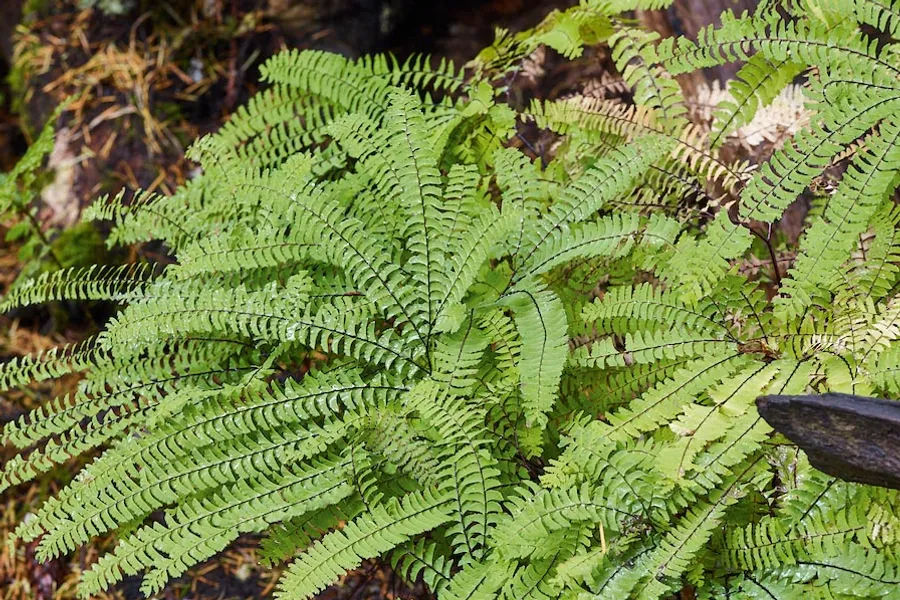
How to care for ferns
When to cut back ferns
In spring, snip off any dead or brown fronds. Cut them off at the base with secateurs. Take care not to damage the new fronds that will be appearing at the base of the plant.
How to care for ferns
Keep ferns well watered for at least a year after planting. After that, most will only need extra water during long dry spells. Find out how to water plants in hot weather.
Water at the base of the plant to avoid the crown rotting. Established plants in the ground do not need frequent watering and should get all they need from rainfall; do water, however in periods of drought.
Ferns in containers need to be watered regularly – do not allow the soil to dry out.
How to propagate ferns
You can propagate ferns by several methods, including dividing plants in spring. You can also propagate them from spores.
Read our expert guide to propagating ferns.
Where to plant ferns
Ferns work well in many different parts of the garden but many do well in shade, so are often the perfect solution for a shady garden.
The conditions under which ferns will flourish is quite variable. Hart’s tongues or Asplenium scolopendrium, for example, often find their way from the flower border to gaps in walls and paving, and are tolerant of deep, dry shade, while the beautiful Osmunda regalis will thrive in wet conditions (even with its feet in water) and will make strong colonies of fronds more than 1.2m tall.
Many ferns also grow very well in containers.
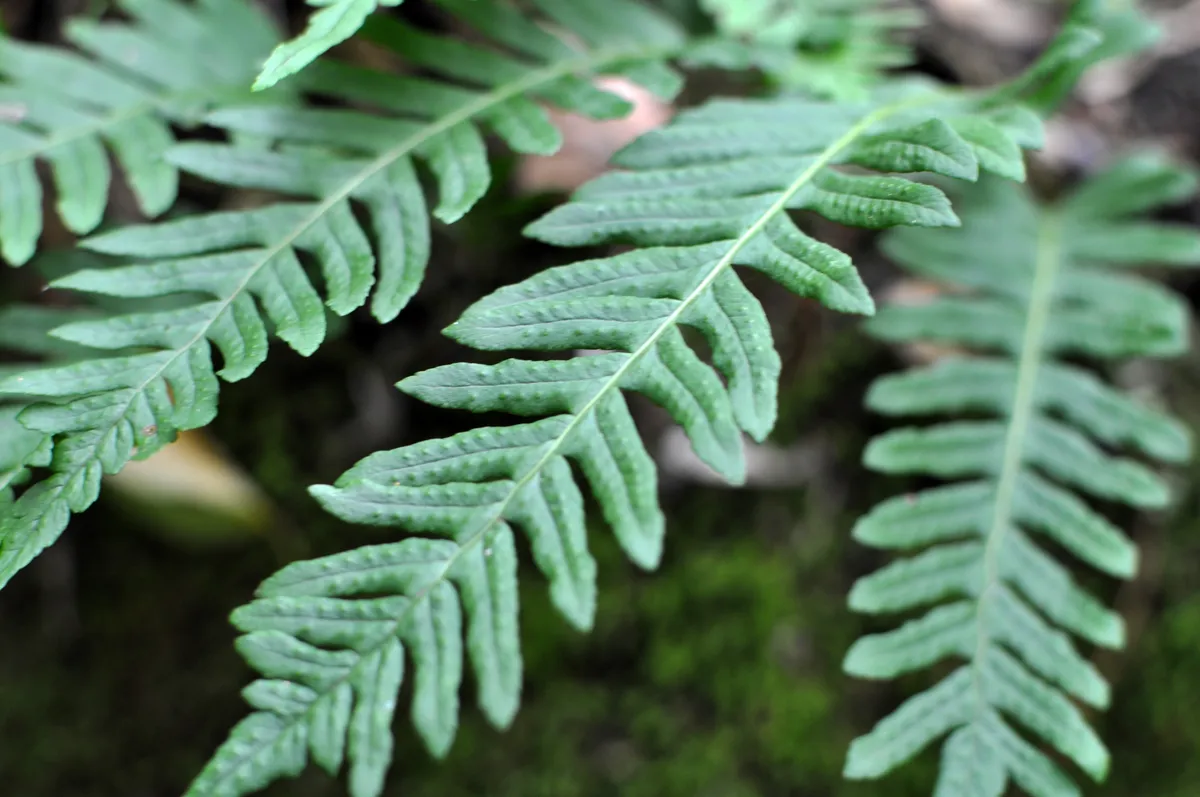
Are ferns evergreen or deciduous?
Some ferns are evergreen and retain their green fronds all year round; others are deciduous, dying back in winter with new fronds unfurling in spring. Some ferns are semi evergreen, which means that they may shed their leaves for a time in winter if the weather is very cold.
Some ferns make excellent house plants. Read our guide to caring for the blue star fern and the asparagus fern.
IN BRIEF: FERNS
Origins Ferns are global and exist in every climate zone. Hardy evergreens can be found in a variety of temperate regions.
Season Evergreen ferns are in display for 12 months of the year.
Size Varies from 20cm to 1.5m.
Conditions In general, ferns tend to prefer shady, reasonably well-drained conditions with a ready supply of moisture, although there are many individual exceptions to this.
Hardiness Variable. Ferns in this article range from RHS H3 to RHS H7, and are suitable for gardens in USDA zones 3a to 9b.
The best ferns to grow in your garden
Asplenium trichomanes
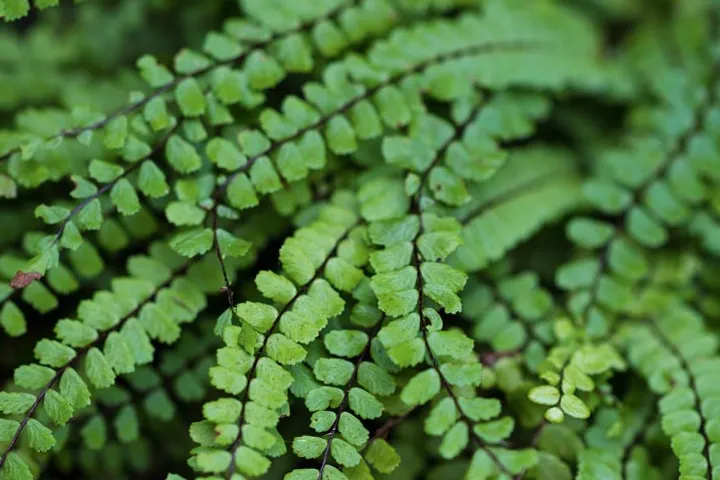
The dainty maidenhair spleenwort is native to the UK but also has an unusually broad global distribution, encompassing much of Europe, Asia and the Americas. It is most at home on the north face of a stone wall.
20cm. AGM. RHS H6, USDA 5a-8b. Evergreen
Blechnum penna-marina
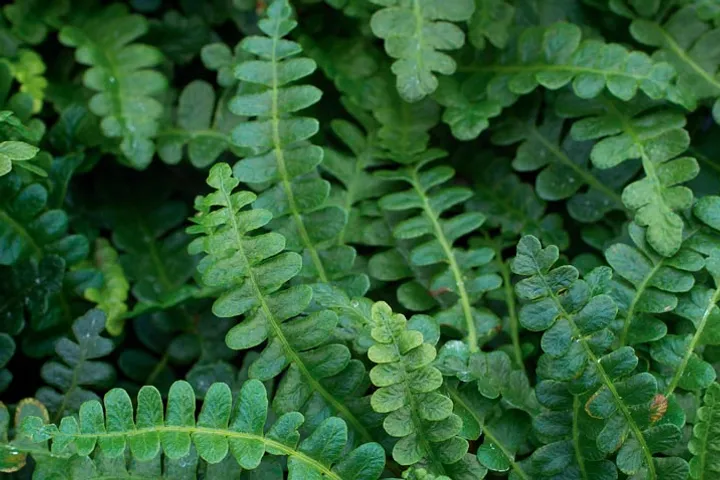
Forms a low-growing mat that becomes variegated in spring as fresh fronds unfurl in rufous tones above the dark, season-old foliage. Great for colonising nooks and crannies such as broad paving joints.
20cm. RHS H4. Evergreen
Polypodium vulgare

The common polypody is unusual among ferns for its tolerance for high light levels. Where plenty of moisture is available, it may grow epiphytically on trees or logs, but is equally at home on land. It colonises by gently spreading rhizomes.
Height 30cm. RHS H7. Evergreen
Athyrium filix-femina ‘Frizelliae’

Arching fronds and very reduced pinnae (individual leaflets). Needs careful positioning to be noticed, but it's a fern that is worth the effort.
40cm. AGM. RHS H6, USDA 4a-8b. Deciduous
Arachniodes simplicior
An unusual-looking fern due to its spidery growth and variegation – pale-yellow blotches at the base of each leaflet create the impression of zingy stripes. An established colony is quite a sight.
70cm. RHS H3, USDA 6a-9b. Evergreen
Adiantum venustum
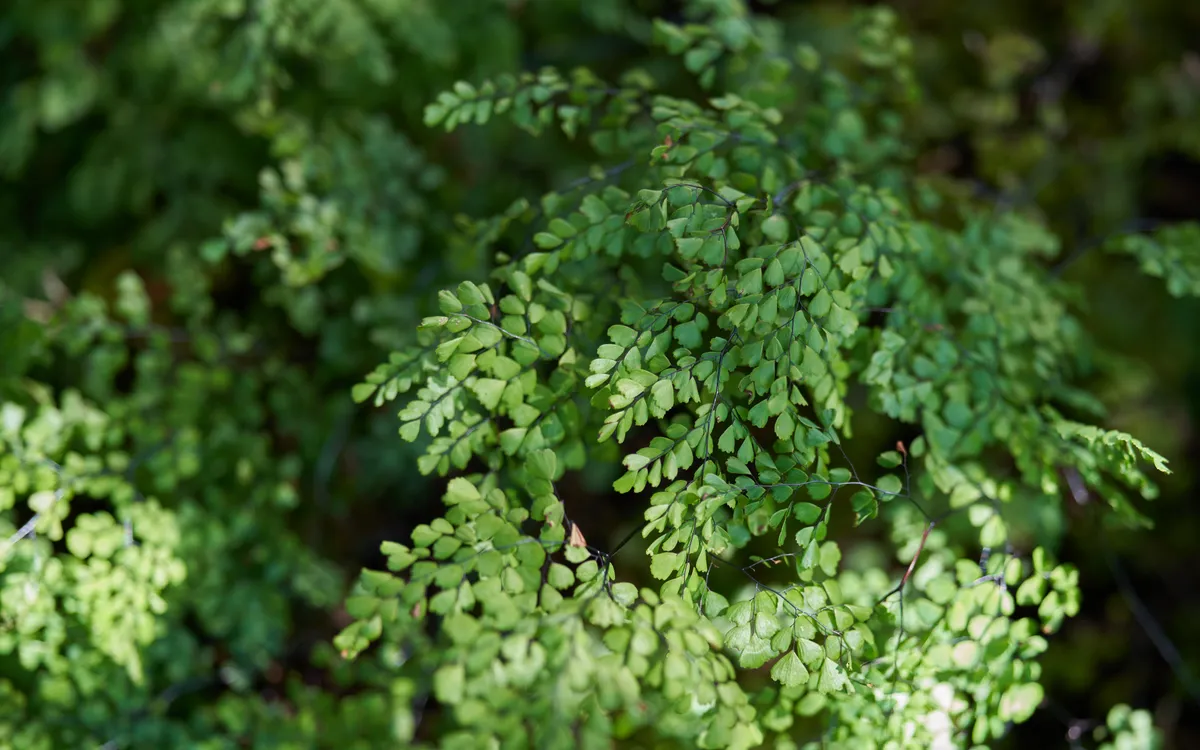
Delicate divided and sub-divided fronds hold unusually scallop-shaped pinnae in a gracefully cascading mound. The wiry, black stems contrast agreeably with the acidic green of the leaf tissue.
40cm. AGM. RHS H7. Evergreen
Blechnum spicant
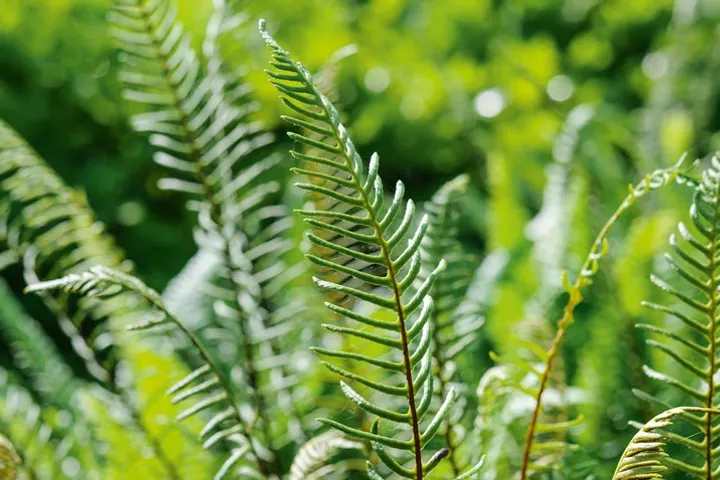
The so-called hard fern can look sombre at times, with its dark, leathery, sterile fronds carpeting the ground. But the emergence of upright, fertile fronds in spring provides spectacular relief.
50cm. AGM. RHS H6, USDA 5a-8b. Evergreen
Dryopteris erythrosora ‘Brilliance’

The striking, bronze foliage of the copper shield fern is particularly marked in this cultivar. After a strong early flush, fresh fronds unfurl at a gentler pace through the growing season.
1m. AGM. RHS H5, USDA 5a-8b. Evergreen
Cyrtomium fortunei
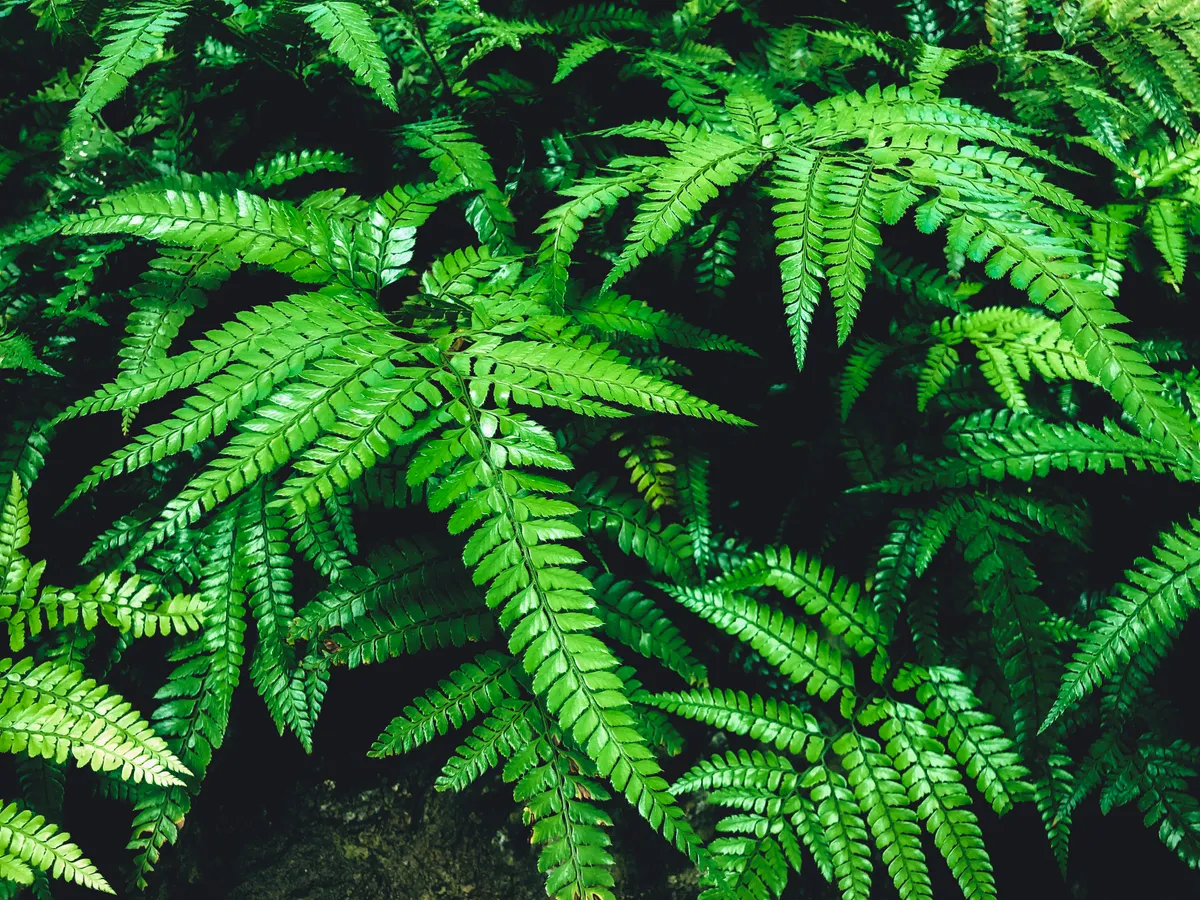
Holly ferns are evocative of an imagined Jurassic Age. C. fortunei is less glossy-leaved but hardier than the otherwise similar species C. falcatum. Great for creating a tropical effect at ground level.
1m. AGM. RHS H3, USDA 6a-9b. Evergreen
Woodwardia fimbriata
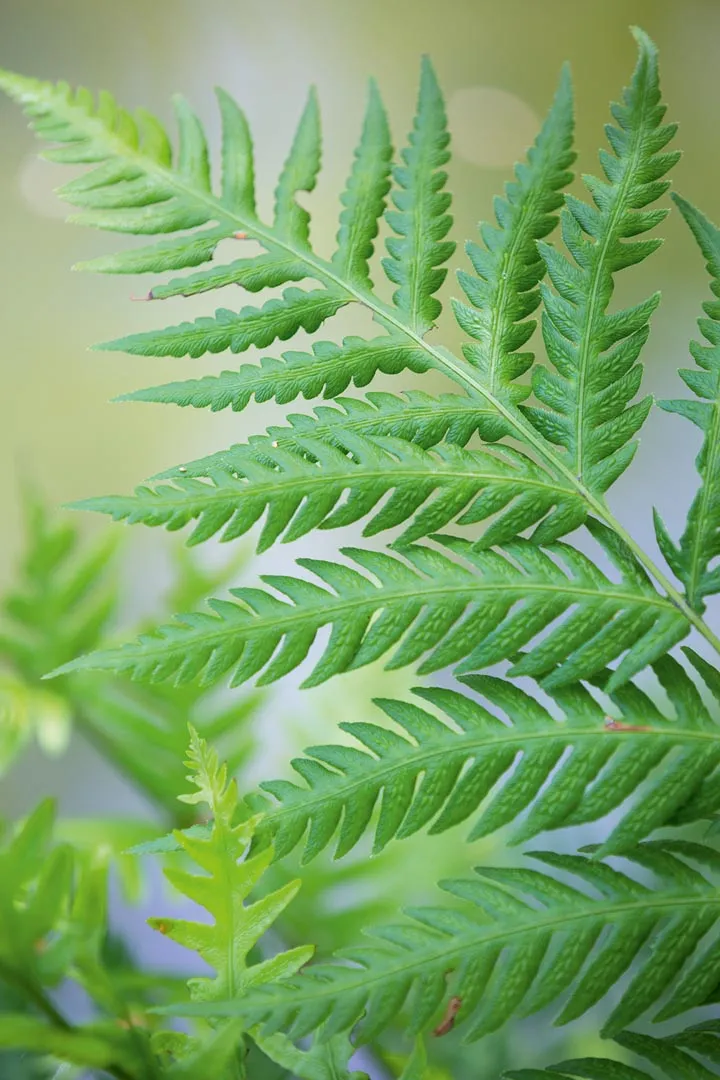
Native to western North America from British Columbia to Baja California. In warm, wet conditions its fronds are capable of growing more than 2m in length, but this is unlikely to be quite matched in the UK.
1.5m. AGM. RHS H3. Evergreen
Blechnum cordatum
Creeping, rhizomatous fern with upright fronds, competitive enough to make an exclusive stand of hard-looking foliage. Once happily established, the fronds may grow to a remarkable height of up to 1.5m.
1.5m AGM. RHS H4. Evergreen
Polystichum setiferum ‘Smith’s Cruciate’
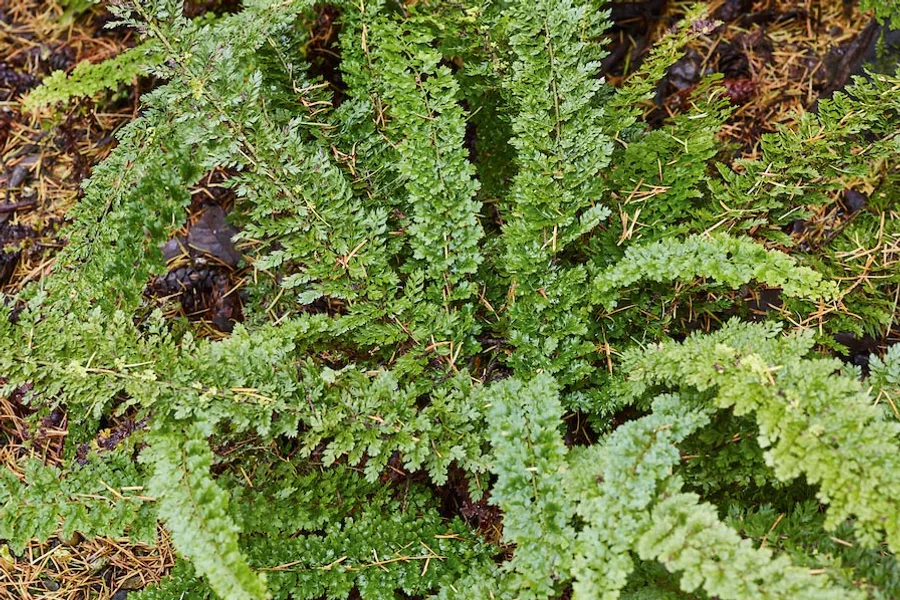
Another narrow-fronded fern mutation but much more substantial and robust than the Athyrium. It can take sunshine with enough moisture but is best grown in shade on humus-rich soils.
40cm. RHS H7. Evergreen
Dryopteris filix-mas ‘Revolvens’
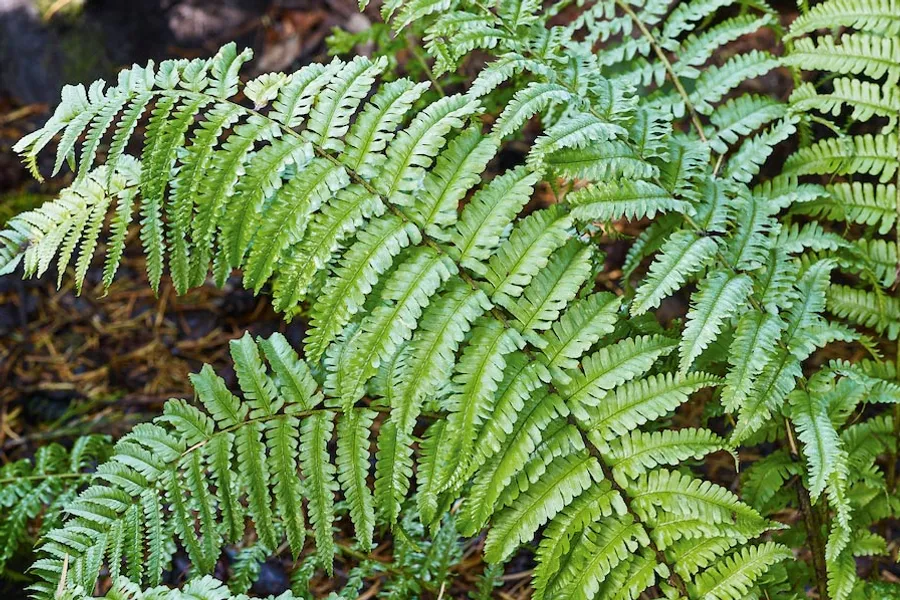
A substantial fern with matt, softly textured and slightly limp, mid-green pinnae held on arching fronds. Will tolerate some dryness once established. Best in dappled shade.
1m. RHS H7, USDA 4a-8b. Semi evergreen
Cyrtomium falcatum ‘Rochfordianum’
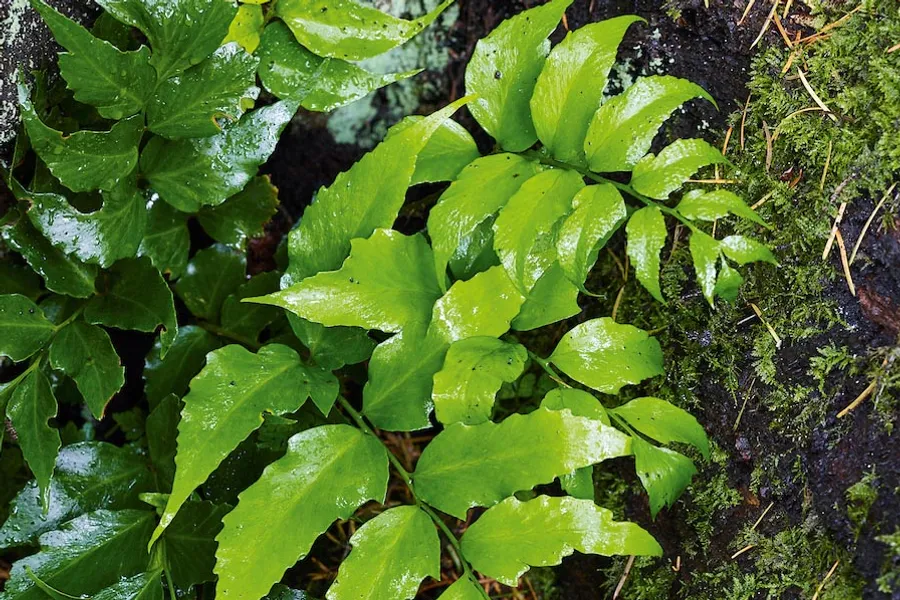
This fern with arching sprays of glossy foliage, is best grown in moist, rich soil but has done well in drier sites.
50cm. RHS H3, USDA 6a-10b. Semi evergreen
Buy Cyrtomium Falcatum ‘Rochfordianum’ from Coolings
Athyrium niponicum var. pictum

A fern that has unusual metallic grey-purple pinnae on small triangular fronds. Can be tricky and needs moist, free-draining soils.
30cm. AGM. RHS H5, USDA 3a- 8b. Deciduous
Adiantum pedatum

This dainty maidenhair fern casts airy fronds of delicate pinnae on thin black stems. Very beautiful and good for front of a border.
45cm. AGM. RHS H6. Deciduous
Dryopteris filix-mas ‘Crispa Cristata’

A cristate (crested) form of the native male fern. Looks good in May when the croziers are unfurling and into winter.
70cm. AGM. RHS H7, USDA 4a-8b. Semi evergreen
Dryopteris sieboldii
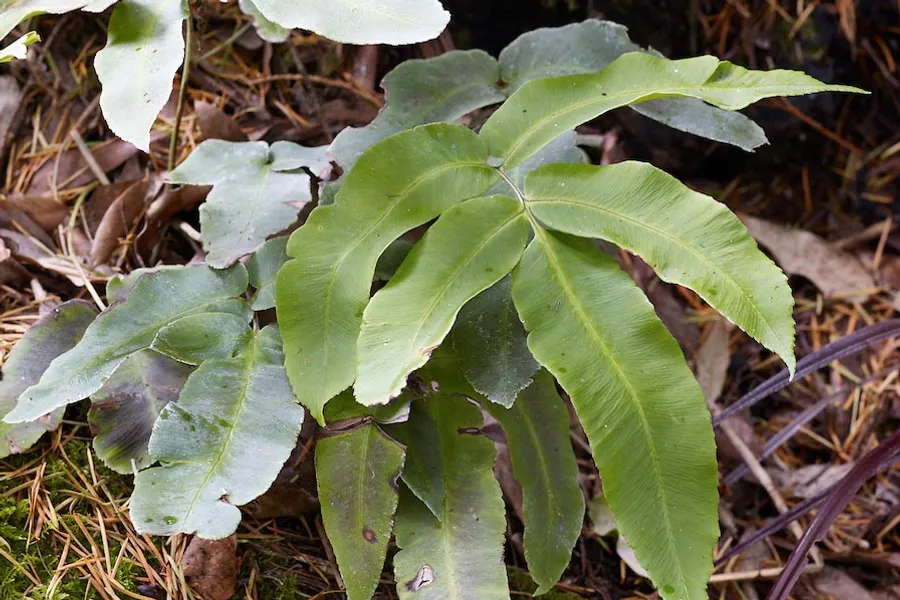
When grown well this fern's foliage has large, green, palmate fronds peppered in striking sori (spore capsules). Needs moist, rich soil and part shade.
30cm. AGM. RHS H6. Evergreen
Dicksonia antarctica
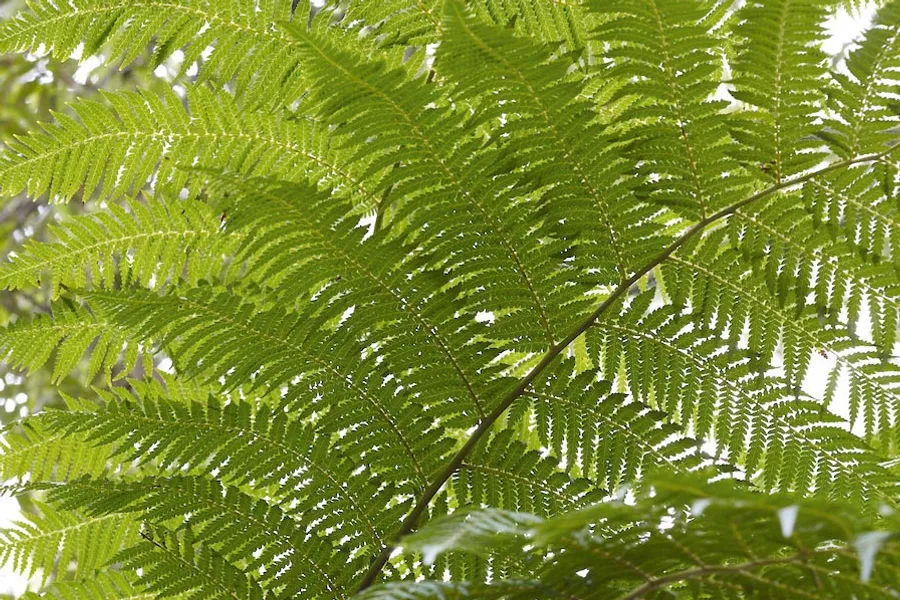
A fern that has huge presence in a garden with large arching fronds that form a radial core atop a chocolate-coloured fibrous trunk.
4m. AGM. RHS H7, USDA 9a-10b. Semi evergreen
Pyrrosia sp.
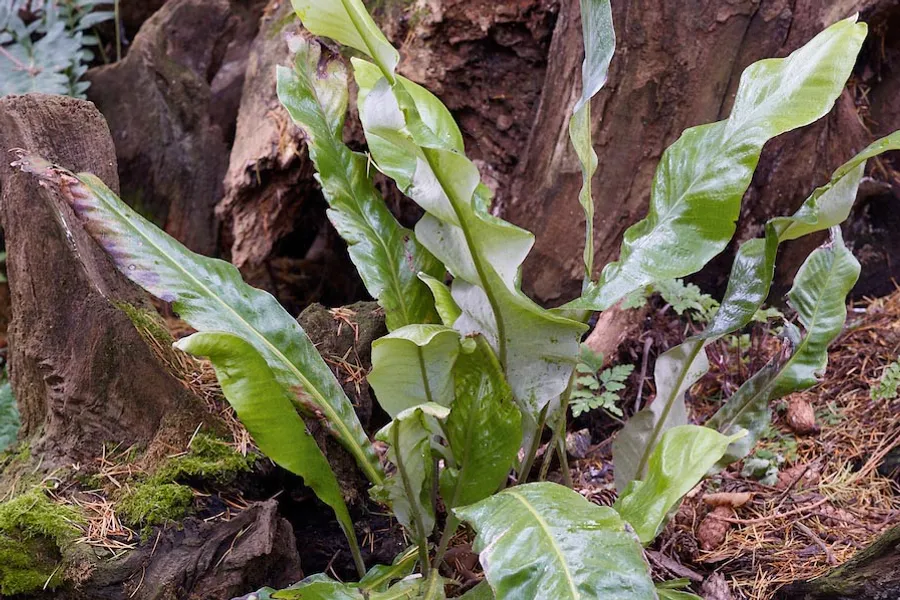
An evergreen fern collected in northeast Himalaya. Initially thought to be tender, it has now survived three winters in the stumpery. Long ascending fronds are lustrous on the upper surface and glaucous underneath.
50cm. RHS H7. Evergreen
Asplenium scolopendrium Cristatum Group
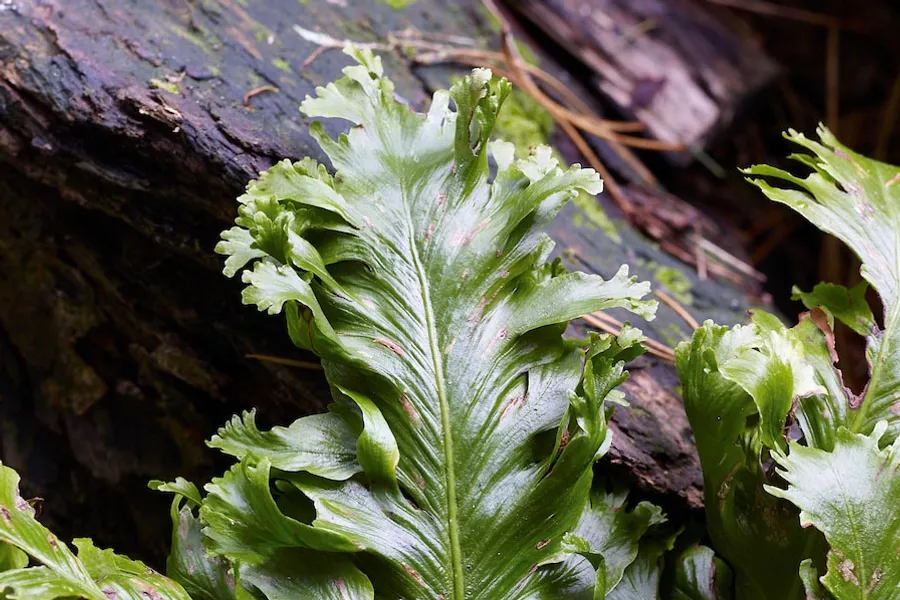
Cristate form of hart’s tongue fern with delightfully unruly foliage that catches the light on shiny, crumpled fronds. Once established will tolerate some drought.
30cm. RHS H6, USDA 5a-9b. Evergreen
Dryopteris wallichiana

In spring, this deciduous fern unfurls to produce fronds with striking, dark rachises (main stalks) and shimmering green pinnae.
1m. AGM. RHS H5, USDA 6a-9b. Semi evergreen
Polystichum polyblepharum
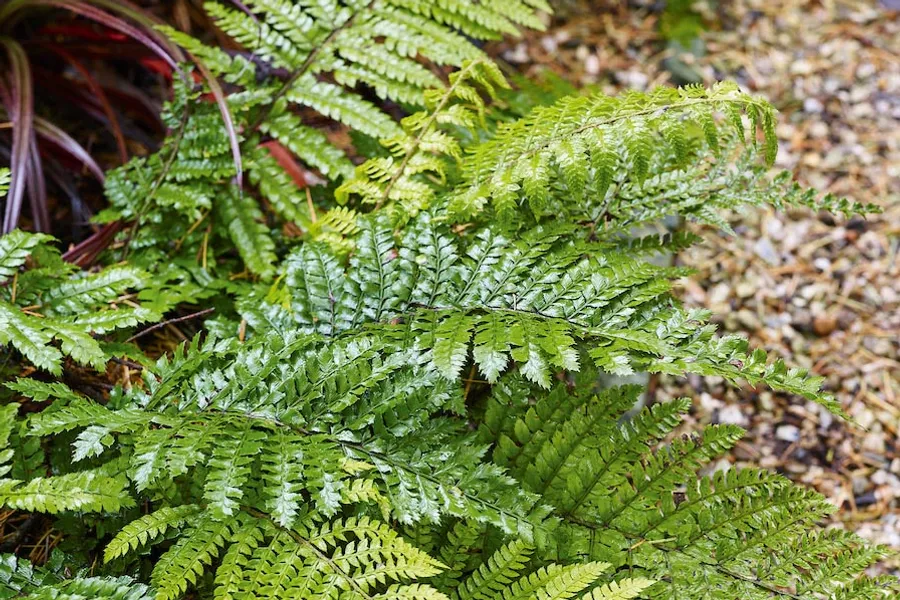
A clump-forming fern with lovely, soft, broad fronds, the new croziers are particularly hairy, and the overall effect is a flatter congregation of fronds than most other ferns.
40cm. AGM. RHS H7, USDA 5a-8b. Evergreen
Asplenium scolopendrium Ramomarginatum Group
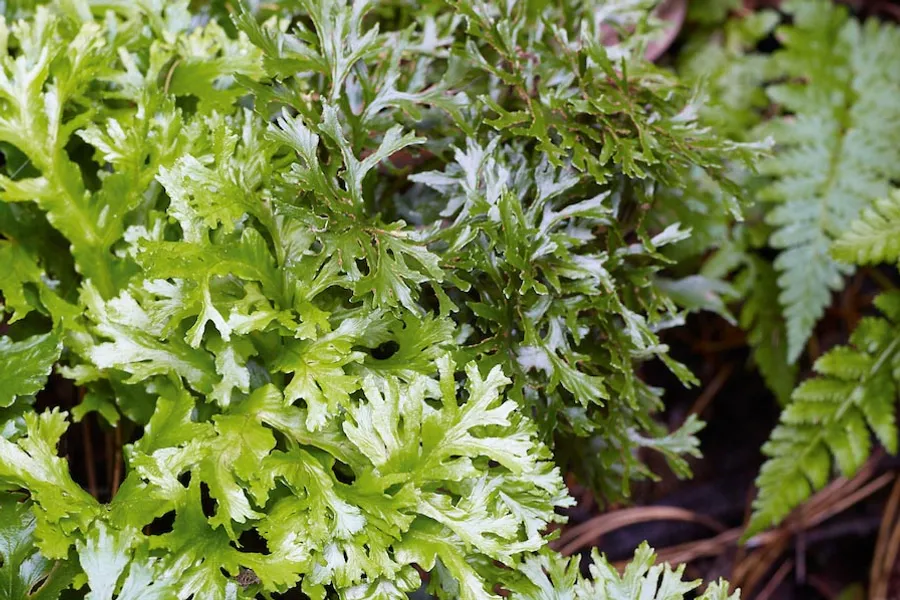
An extraordinary fern with wonderful branched foliage. Grow in a sheltered site on good soil.
30cm. RHS H6, USDA 4a-9b. Evergreen
Phlebodium aureum ‘Blue Star’

Normally used as a houseplant, the Phlebodium aureum 'Blue star' fern will persist in a sheltered site outdoors with handsome, blue-green fronds.
Here's how to care for a blue star fern
50cm. RHS H7. Evergreen